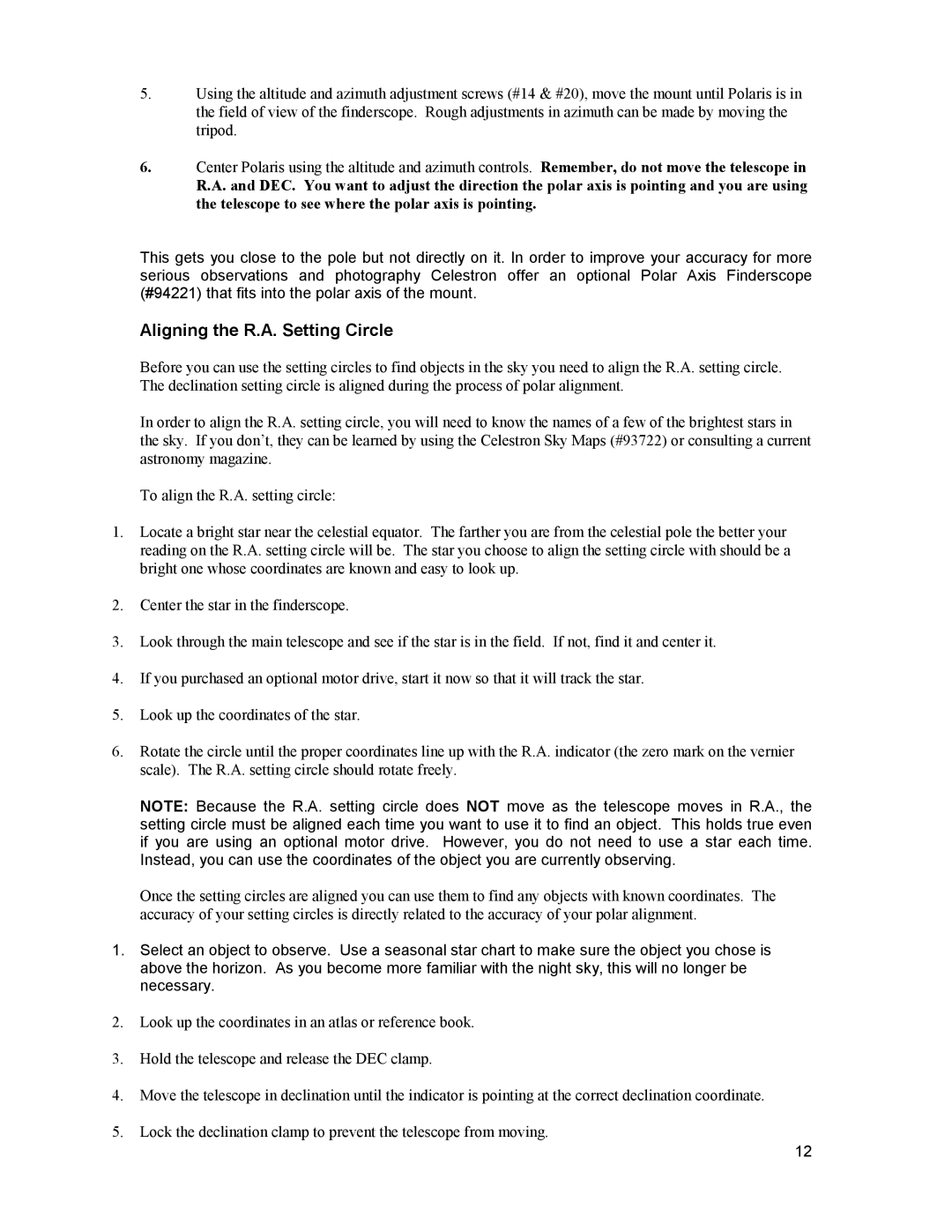91510 specifications
The Celestron 91510 is a remarkable telescope that offers astronomy enthusiasts a blend of quality, portability, and advanced features, making it a popular choice for both beginners and seasoned stargazers alike. Known for its impressive optics, the Celestron 91510 utilizes a 70mm refractor design that provides bright and clear images, ideal for observing celestial objects such as planets, stars, and deep-sky phenomena.One of the standout features of the Celestron 91510 is its fully coated optics, which enhance light transmission and improve image quality. This ensures that users can observe fine details in celestial bodies, such as the rings of Saturn or the craters on the Moon. The telescope comes with two eyepieces of different focal lengths, allowing for varying magnification. This versatility enables users to explore the night sky with ease, offering both wide-field views of star clusters and higher magnification for detailed observations.
Portability is another significant advantage of the Celestron 91510. Designed with travel in mind, this telescope is lightweight and compact, making it easy to set up and transport. It features a sturdy yet portable mount that provides stable support during observations. The pan-and-tilt head allows for smooth tracking of celestial objects, ensuring that users can focus on their targets without hassle.
Moreover, the telescope includes a red dot finder which aids in locating objects quickly in the night sky. This user-friendly feature is especially beneficial for beginners who may find it challenging to navigate the stars. The adjustable tripod provides a stable base and can be set to various heights, ensuring comfort during extended viewing sessions.
Celestron's commitment to quality and innovation is evident in the design of the 91510. It incorporates durable materials that withstand the rigors of outdoor use, ensuring longevity. Additionally, the telescope's overall aesthetic appeal, complete with a sleek design, adds to the enjoyment of using this astronomical instrument.
In summary, the Celestron 91510 is an excellent choice for anyone looking to delve into the wonders of astronomy. With its high-quality optics, user-friendly features, and portability, it offers an enjoyable stargazing experience. Whether you are a novice wanting to explore the cosmos or an experienced astronomer seeking a reliable companion, the Celestron 91510 stands out as an exceptional option.
